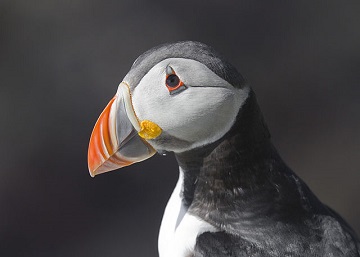330614-Atlantic_Puffin.jpg

Atlantic puffin. Credit: Andreas Trepte, www.photo-natur.de
If not for its colorful bill and bright orange feet, the Atlantic puffin might easily be mistaken for a penguin. Its body displays the same black-and-white markings as a penguin’s, and, like a penguin, the puffin is at its most graceful in the water. Its bill, though, looks more like something from a tropical jungle, giving the puffin one of its nicknames: sea parrot. Atlantic puffins are found from northeastern North America, across Greenland and Iceland, to northern Europe.
They spend most of their time in the water. But they come ashore during summer to build nests and raise chicks, usually on rocky islands and cliffs. The male digs a burrow and lines it with grass and feathers. The female lays a single egg, and both parents incubate the egg and then feed the chick. When it leaves the nest, the young puffin heads to sea and won’t return to land for several years.
In the 19th century, puffins were a common sight along the coast of Maine. But hunters killed them by the thousands. By 1901, only a single pair was known to remain.
Conservation efforts started a few years later, and the birds began to return to several islands. In the 1970s, chicks from Canada were brought to Eastern Egg Rock, establishing a breeding colony that today numbers more than 200.
The puffins still face challenges, though. Climate change and overfishing are reducing stocks of herring, one of their favorite foods. That could cause the Atlantic puffin to once again disappear from Maine waters.

